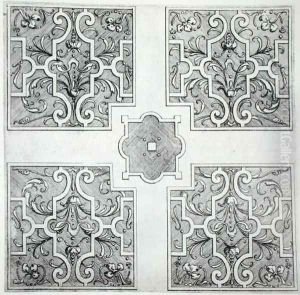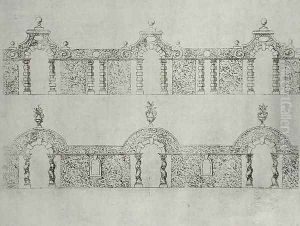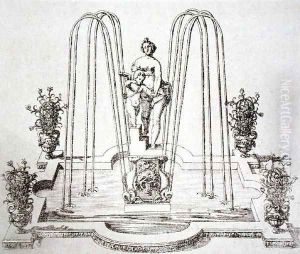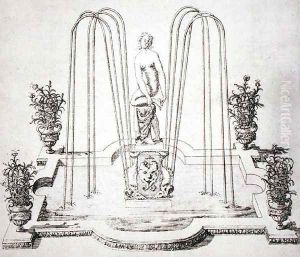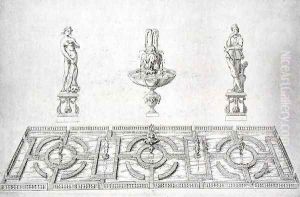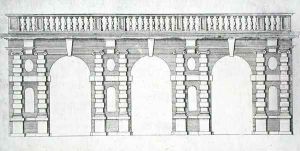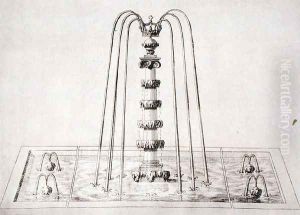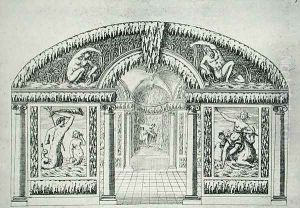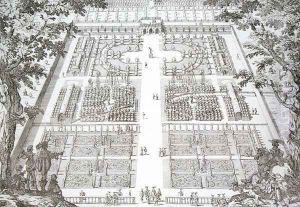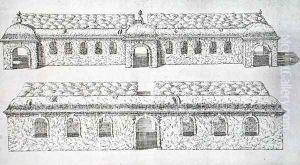Isaac de Caus Paintings
Isaac de Caus was a French landscaper and architect, remembered primarily for his work on the development of English and French formal gardens. Born in Dieppe, France, around 1590, de Caus came from a family of engineers and architects. His brother, Salomon de Caus, was also a notable engineer and architect, and together they were part of the early 17th-century movement that introduced the French formal garden style to England.
Isaac de Caus began his career in the service of Louis XIII of France, but he later moved to England to work under the patronage of Prince Henry and subsequently King James I. One of his most significant contributions to landscape architecture was his work at Wilton House, where he designed the gardens under the commission of the Earl of Pembroke. His designs at Wilton House included intricate water features, grottoes, and geometrically arranged parterres, which were innovative and influential in the development of English garden design.
De Caus was also an author and published a book titled 'La pratique et la démonstration des horloges solaires' (The Practice and Demonstration of Sundials) in 1624, which showcased his interest in engineering and applied mathematics. His work in sundial design is considered an important contribution to the field of gnomonics, the art and science of sundial construction.
Although not as well known as some of his contemporaries, Isaac de Caus's influence on the evolution of garden design was significant. His approach blended the French formal style with the more natural English landscape, paving the way for future developments in garden architecture. He passed away in 1648, leaving behind a legacy of innovation in the realm of gardens and landscapes.
